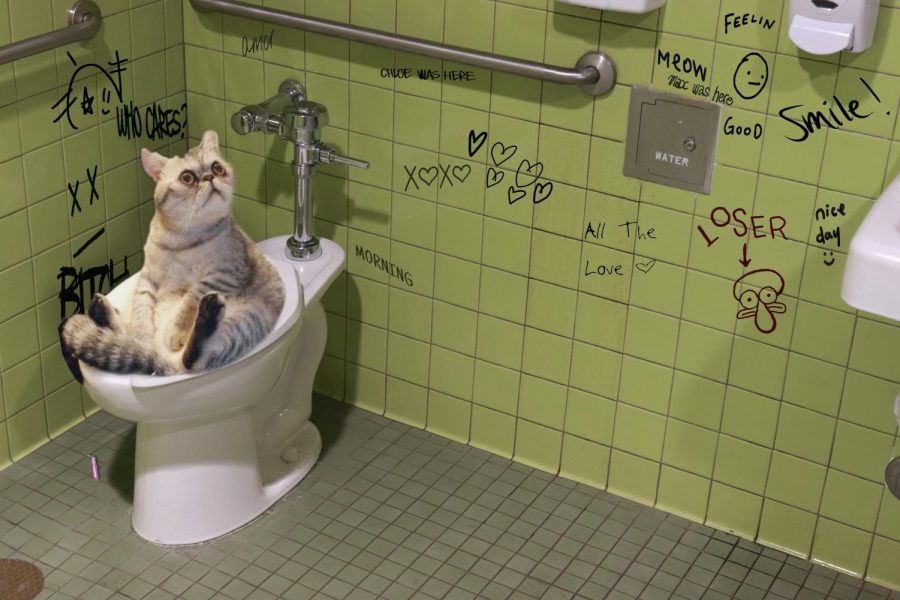The Consequences of Flushing Cat Poop Down Your Toilet - Safeguard Your Plumbing
The Consequences of Flushing Cat Poop Down Your Toilet - Safeguard Your Plumbing
Blog Article
This great article which follows on the subject of How to Dispose of Cat Poop and Litter Without Plastic Bags is unquestionably fascinating. Don't miss out on it.

Introduction
As pet cat proprietors, it's important to be mindful of exactly how we dispose of our feline good friends' waste. While it may appear convenient to flush pet cat poop down the toilet, this practice can have harmful effects for both the environment and human health.
Environmental Impact
Purging cat poop presents dangerous pathogens and parasites into the water, posing a substantial risk to water ecosystems. These contaminants can negatively influence marine life and compromise water high quality.
Wellness Risks
In addition to environmental issues, flushing cat waste can additionally position health threats to humans. Feline feces may consist of Toxoplasma gondii, a bloodsucker that can create toxoplasmosis-- a potentially serious ailment, specifically for pregnant females and individuals with weakened immune systems.
Alternatives to Flushing
Thankfully, there are much safer and more liable means to get rid of pet cat poop. Take into consideration the adhering to alternatives:
1. Scoop and Dispose in Trash
One of the most usual approach of dealing with pet cat poop is to scoop it into a biodegradable bag and toss it in the garbage. Be sure to use a specialized litter inside story and dispose of the waste quickly.
2. Usage Biodegradable Litter
Opt for naturally degradable feline trash made from materials such as corn or wheat. These trashes are eco-friendly and can be safely disposed of in the garbage.
3. Hide in the Yard
If you have a backyard, think about hiding cat waste in a designated location far from veggie gardens and water sources. Be sure to dig deep enough to avoid contamination of groundwater.
4. Install a Pet Waste Disposal System
Buy a family pet garbage disposal system especially designed for pet cat waste. These systems use enzymes to break down the waste, reducing odor and environmental influence.
Conclusion
Liable animal ownership extends beyond providing food and shelter-- it additionally entails proper waste management. By avoiding flushing pet cat poop down the commode and selecting alternative disposal techniques, we can reduce our environmental footprint and safeguard human wellness.
Why Can’t I Flush Cat Poop?
It Spreads a Parasite
Cats are frequently infected with a parasite called toxoplasma gondii. The parasite causes an infection called toxoplasmosis. It is usually harmless to cats. The parasite only uses cat poop as a host for its eggs. Otherwise, the cat’s immune system usually keeps the infection at low enough levels to maintain its own health. But it does not stop the develop of eggs. These eggs are tiny and surprisingly tough. They may survive for a year before they begin to grow. But that’s the problem.
Our wastewater system is not designed to deal with toxoplasmosis eggs. Instead, most eggs will flush from your toilet into sewers and wastewater management plants. After the sewage is treated for many other harmful things in it, it is typically released into local rivers, lakes, or oceans. Here, the toxoplasmosis eggs can find new hosts, including starfish, crabs, otters, and many other wildlife. For many, this is a significant risk to their health. Toxoplasmosis can also end up infecting water sources that are important for agriculture, which means our deer, pigs, and sheep can get infected too.
Is There Risk to Humans?
There can be a risk to human life from flushing cat poop down the toilet. If you do so, the parasites from your cat’s poop can end up in shellfish, game animals, or livestock. If this meat is then served raw or undercooked, the people who eat it can get sick.
In fact, according to the CDC, 40 million people in the United States are infected with toxoplasma gondii. They get it from exposure to infected seafood, or from some kind of cat poop contamination, like drinking from a stream that is contaminated or touching anything that has come into contact with cat poop. That includes just cleaning a cat litter box.
Most people who get infected with these parasites will not develop any symptoms. However, for pregnant women or for those with compromised immune systems, the parasite can cause severe health problems.
How to Handle Cat Poop
The best way to handle cat poop is actually to clean the box more often. The eggs that the parasite sheds will not become active until one to five days after the cat poops. That means that if you clean daily, you’re much less likely to come into direct contact with infectious eggs.
That said, always dispose of cat poop in the garbage and not down the toilet. Wash your hands before and after you clean the litter box, and bring the bag of poop right outside to your garbage bins.
https://trenchlesssolutionsusa.com/why-cant-i-flush-cat-poop/

I'm just very fascinated with How to Dispose of Cat Poop and Litter Without Plastic Bags and I hope you enjoyed the new blog posting. Make sure you take the opportunity to promote this post if you enjoyed it. I praise you for your time. Please check our website back soon.
Request Estimate Report this page